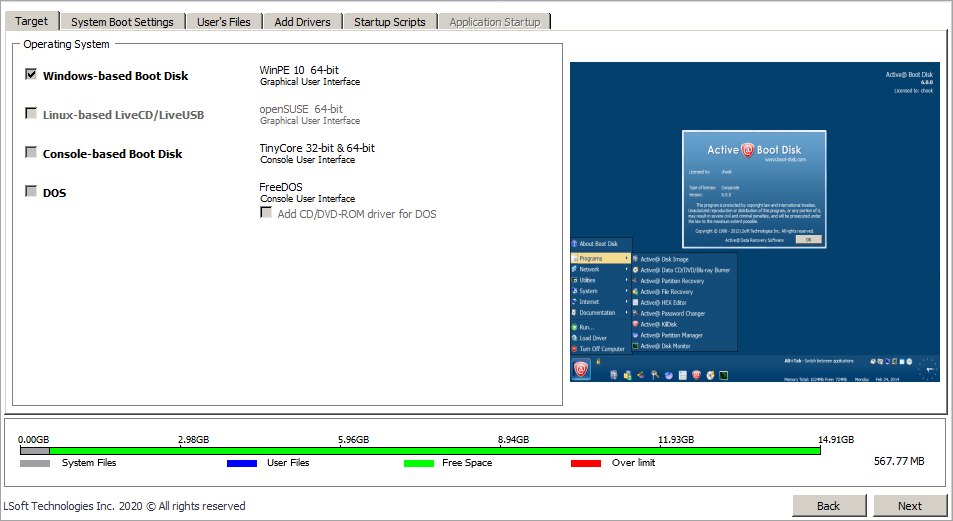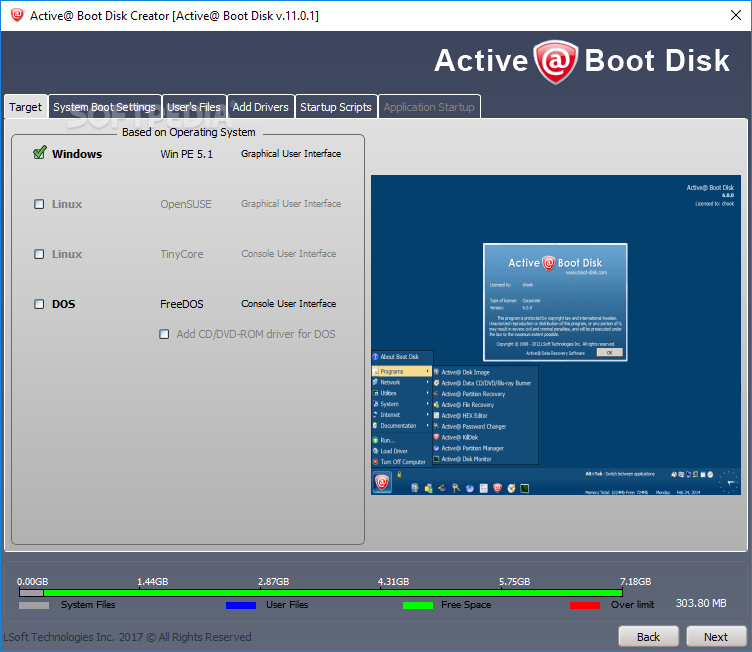

- Boot disk creator how to#
- Boot disk creator drivers#
- Boot disk creator update#
- Boot disk creator windows#
Boot disk creator drivers#
StandAlone - This task type will not try to load network drivers and will not map the network drives.

Network - This task type will load network adapter drivers and try to launch Ghost. (There is no Automation Agent in Standard Tools, so when using Ghost Standard Tools Automation is the same as Network.) You launch this from Program Files (x86)\Symantec\Ghost\bootwiz\bootwiz.exeĪutomation - This task type will load network adapter drivers and try to launch Ghost. This application is part of the Ghost Solution suite Standard Tools. To see the Boot Task Type options right click on a configuration in the Boot Disk Creator, then choose Create Boot Disk. The Boot Task Type selections perform differently in the different versions.

Functionality differs, and preboot operating systems are imported into each version separately. While they share the same name they are, in fact, entirely separate.

You would be much better off using DOSBOX to run old DOS games and other applications.There are 2 different versions of Boot Disk Creator. This helps ensure BIOS updates and other low-level operations work properly. You also could use a bootable USB drive to run old DOS applications, but that tends not to work so well.
Boot disk creator windows#
These utilities still use DOS to ensure they have low-level access to the hardware without any other programs interfering or Windows getting in the way.
Boot disk creator how to#
RELATED: How To Use DOSBox To Run DOS Games and Old Apps Follow any instructions provided in the manufacturer’s documentation to run the application. Once you are in DOS, you can run the program you copied to your USB drive by typing its name at the DOS prompt. If your computer does not automatically boot from the USB drive, you may need to change your boot order or use a boot menu to select the device from which you want to boot. You can now boot into DOS by restarting your computer with the USB drive connected. RELATED: How to Boot Your Computer From a Disc or USB Drive Copy these files into the root directory of the USB drive after formatting it. For example, you may have a BIOS.BIN and FLASHBIOS.BAT file you need to run in DOS. To actually run these files from DOS, you will need to copy them over to your newly-formatted USB drive.
Boot disk creator update#
You have probably created this boot drive because you have a DOS-based program to run, such as a BIOS update utility or another low-level system program. The formatting process should be extremely quick-usually a matter of seconds-but it can take longer depending on the size of your USB drive. Select the “Create a bootable disk using” option and then choose “FreeDOS” from the dropdown menu next to that option.Ĭlick the “Start” button to format the disk and copy the files necessary to boot into FreeDOS. The DOS option requires FAT32 and isn’t available for the other file system options like NTFS, UDF, and exFAT. RELATED: What's the Difference Between FAT32, exFAT, and NTFS?įrom the “File System” dropdown menu, choose the “FAT32” format. Note that this process will erase the contents of your USB drive, so make sure you’ve backed up any important files on the USB drive first. First, connect your USB drive to the computer and select it in the “Device” dropdown menu. Creating a DOS-bootable USB drive in Rufus is simple.


 0 kommentar(er)
0 kommentar(er)
